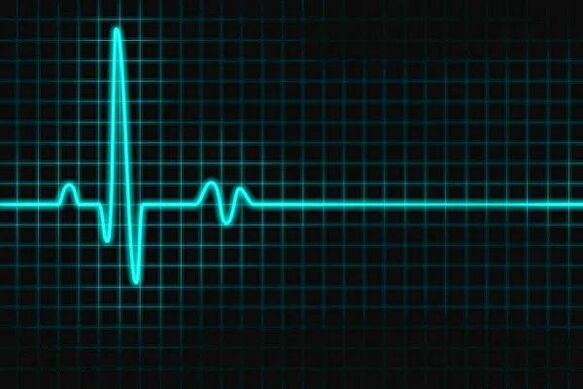
Alcoholism can actually be considered a problem of humanity. However, not everyone can say exactly when and how the disease can manifest itself. Meanwhile, alcoholism, like any other disease, has many stages.
There are 4 stages of alcoholism in total. Not only the duration and effectiveness of treatment, but the final outcome will depend on the degree of neglect and the condition of the patient's living environment.
After all, many people who have recovered from illness even after a few years go back to their old habits.
It is not the treatment, but the wrong approach, the main cause of this problem, due to the lack of knowledge about the personality characteristics of the patient, as well as not enough mental-emotional support for the patient. relatives and friends.
The early stages of alcoholism: causes and treatment
Read more: what is alcoholism.
The early stages of alcoholism are not always considered the beginning of personality deterioration and progression of such disease. Its treatment and duration may depend on parameters such as:
- Patient's age;
- Stage of the disease;
- The emotional state and atmosphere in the family;
- predisposition (inherited);
- Environment;
- The stability / instability of the human psyche;
- Awareness of such a problem, not only of the patient, but also of all his friends and relatives;
- Patient's gender (male or female).
- The amount of alcohol is gradually increased;
- Can accept strong drinks even for a small reason;
- A person loses control, difficult to control movement, thinking after drinking alcohol;
- Aggression towards acquaintances and friends is more often expressed;
- Unable to stop even after emptying the stomach of accumulated alcohol (vomiting);
- There is a severe hangover with pain in the head;
- So far, he's reacted negatively with a hangover (rejecting alcohol);
- Conflict in actions and words, both in drunkenness and in sobriety;
- Negative attitude towards alcoholics, not taking their problems seriously.

Early stage treatment

Also, do not miss the effect of alcohol on all human organs. Therefore, to understand the problem will help research on:
- Diseases of the liver and pancreas (severe, nausea, vomiting, abdominal pain and pain, bloating, indigestion);
- Vascular disease (varicose veins, heaviness in the legs, swelling and pain after a day);
- Hypertension (sudden increase in blood pressure, loss of strength, severe headache, nausea);
- Neurological disorders (headache, convulsions, swelling, irritability, sleep disturbances, tremors, aggression, laziness).
How to determine the stage of alcoholism? You cannot figure this out on your own without the help of a qualified professional. The first signs will warn you. Early diagnosis and treatment are the basis for successful treatment.
Second stage of alcoholism: what are the symptoms and treatments

The patient reacts harshly to criticism and comments from the outside, being strong and forthright in expression.
The degree of alcoholism and treatment vary from case to case. One will need additional psychological help, the second will need difficult conditions and limitations that he will not be able to overcome. However, one thing becomes clear: one cannot do without outside help. The second stage of alcohol dependence is treated through an integrated approach:
- Cleanse the body. An important step that allows you to get rid of accumulated toxins. The intoxication of the body in this case is high, and the drug allows you not only to cope with the side effects of drinking large amounts of alcohol, but also to accelerate the breakdown of ethanol in the blood plasma;
- Stimulant treatment - drugs are injected intravenously to develop alcohol withdrawal. Usually such drugs do not cause discomfort to the person who does not take them. But the simultaneous intake of alcohol and such a drug causes vomiting, nausea, severe headaches and denial on a subconscious level;
- Psychiatrist help. After all the manipulations have been done with the patient's body, the brain has been freed from the effects of ethanol, it is time to proceed to the main phase of treatment - psychological support and adaptation to normal life. often.
How long such treatment can last is an individual characteristic of the patient. At this stage, it is important to identify the main causes of cravings for alcohol.
After all, the effect of the drug will not reduce the psycho-emotional dependence on relaxation, which can be obtained with alcohol consumption.
This stage and its effectiveness completely depend on the expertise of the doctor and the willingness of all to accept the results. Only in this case can the recurrence of the disease be prevented.
The third stage of alcoholism: a problem of society and not only

The third stage of alcoholism is no longer a problem only for the patient's family and close friends. This is a problem of the whole society: a degraded person who violates all existing norms and rules of communication, does not respond to the opinions and requests of relatives, is a "burden" factor for the family. family. Indeed, often the third stage of alcoholism forces a person to refuse work, neglecting the wishes of relatives and friends. This means that such a patient cannot afford to buy expensive alcoholic beverages. As a result, money, expensive equipment and food are stolen from the home. In addition, the third stage of alcoholism comes with additional characteristics such as:
- Distortion of appearance: thin arms and legs, enlarged trunk and abdomen, burgundy or gray skin with obvious congested veins, swelling in any condition on all extremities and under eyes, loss of teeth, darkening;
- Psychological disturbances: inappropriate reactions to simple things, unwillingness to interact, aggression for no reason, unwillingness to change anything;
- Alcohol is the basis of the diet, replacing all healthy human nutrients. How much a person can drink depends in part on his configuration;
- Distorted voice;
- Paralysis of certain parts of the body, more often in the face, arms, or legs;
- Health problems: hepatitis, chronic pancreatitis, cancer, difficulty digesting food, urinary incontinence;
- Alcohol resistance (lesser dosage, but more often).
Drinking alcohol before and during pregnancy
Treatment of alcoholism at this stage is difficult and not always effective. First of all, this is due to the complete distortion of the human soul, a re-evaluation of his values and priorities in life.
Often such an addict does not set himself any goals, except for the extraction of the next part of alcohol.
However, all of the first three stages of alcoholism can only be treated if the problem is approached correctly.
What stages are difficult to treat?

An important sign of the third stage of alcoholism is life-threatening: 80% of deaths even after treatment due to years of intoxication and irreversible transformation processesof internal organs. Cardiac tissue deterioration, vascular deformation, chronic diseases of the liver, kidneys and pancreas (in women, as well as the reproductive system) create dangerous conditions for a future quality life ofperson is cured. Supporting the most affected organs after treatment is the main task.
End stage of alcoholism: no choice

Alcoholism is an insidious disease. She sneaks in when it seems like the whole world is standing in arms against you. Often the early stages of alcoholism are overlooked, not seen as a real problem. And then the progression and rate of development of complications is inevitable. Years may pass from the time of the transition from the first to the fourth.
When the first signs are not identified and ignored, the complexity of treatment increases every day. Alcoholism in the fourth degree of development is more of a sentence. Life in months and weeks.
The body is completely exhausted, and the organs are no longer able to fulfill the basic functions of metabolism. But not just for the sick.
This is a diagnosis for those who cannot help in time, join hands to help, do not see illness as a problem.
Unfortunately, at the fourth stage, it can no longer help. The patient could not be persuaded or hospitalized. At worst, the Stage 4 person in front of you has nothing to do with the person you once knew.
His brain is so warped by alcohol that it's impossible to recognize someone you once knew. The complete deterioration of the subconscious mind, the basic instincts are replaced by new ones (drinking). Even a professional psychologist and hypnotherapist will not help get rid of the problem.
Alcoholism is a disease. This is an important thing to remember. Remember and know what can be done to avoid the uncertain fate of an alcoholic who, on whom all relatives and friends have turned, has excluded him from the world of the living.
Alcoholism
Alcoholism is a disease that occurs with the systematic abuse of alcohol, characterized by mental dependence during intoxication, neurological and neurological disorders, and personality deterioration. The disease can also progress with abstinence from alcohol.
In the CIS, 14% of the adult population abuse alcohol and another 80% drink alcohol in moderation, which is due to a number of drinking traditions that have developed in the society.
Factors such as conflicts with loved ones, inadequate living standards, and lack of self-perception in life often lead to abuse. In youth, alcohol was used as a way to feel inner comfort, courage and overcome shyness. In middle age, it was used as a way to relieve fatigue, stress and stay away from social problems.
The constant use of this relaxation method leads to a persistent addiction and the inability to feel at ease without being intoxicated. According to the degree of dependence and symptoms, several stages of alcoholism are distinguished.
Stages of alcoholism
The first stage of alcoholism
The early stages of the disease are characterized by an increase in the dose and frequency of alcohol consumption. There is an altered reactivity syndrome in which alcohol tolerance is altered. The protective reactions of the body against overdose disappear, especially there is no vomiting when drinking large doses of alcohol.
With severe intoxication, symptoms of paralysis - loss of memory are observed. Psychological dependence is expressed by feeling unsatisfied in a sober state, often thinking about alcohol, and raising the mood before drinking.
The first phase lasts from 1 to 5 years, while attraction is manageable, as there is no physical dependence syndrome. A person who does not degrade and does not lose the ability to work.
Complications of alcoholism in the early stages manifest mainly in the liver, where alcoholic fatty degeneration occurs.
Clinically almost no symptoms, some cases may have a feeling of abdominal pain, bloating, diarrhea. A complication can be diagnosed by an enlargement and thickening of the liver.
When palpating the rounded edge of the liver, it is slightly sensitive. With a strict diet, these symptoms will disappear.
Complications from the pancreas are acute and chronic pancreatitis. Simultaneously, abdominal pain was noted, localized to the left side and radiating to the back, as well as decreased appetite, nausea, flatulence, and unstable stools.
Often, alcohol abuse will lead to alcoholic gastritis, whereby there is no appetite and nausea, pain in the epigastrium.
Second stage
Stage two alcoholism has a progression time of 5 to 15 years and is characterized by an increased response syndrome.
Tolerance of alcohol reaches its maximum, so-called spurious drinking occurs, their frequency is not related to the patient's attempts to quit alcoholism, but to external circumstances, such aslack of money and inability to drink.

The sedative effect of alcohol is replaced by the activating effect, the memory loss from drinking large amounts of alcohol is replaced by complete amnesia at the end of the intoxication. At the same time, daily drunkenness is explained by the mental dependence syndrome, in a sober state, the patient loses the ability to work mentally, mental activity is disorganized. There is a physical syndrome of alcoholism, which suppresses all sensations except cravings for alcohol, becoming uncontrollable. The patient is depressed, irritable, unable to work. After drinking alcohol, these functions return to their original positions, but the loss of alcohol control leads to excessive intoxication.
Treatment of alcoholism in the second stage should be done in a specialized hospital, an autobiologist or a psychiatrist.
Refusal of strong alcohol causes neurological symptoms of alcoholism such as extraocular vision, dilated pupils, upper body congestion, trembling fingers, nausea, vomiting, delirium, heart attack, liver and headache.
There are psychotic symptoms of personality deterioration, intellectual impairment, delusional ideas. There is often anxiety, nocturnal anxiety, convulsive seizures, which are signs of an acute psychosis - delirium, commonly known as delirium.
Complications of alcoholism of the second degree from the side of the liver are manifested by alcoholic hepatitis, usually in a chronic form. The disease is more common in a persistent rather than progressive form.
Like grade 1 complications, viral hepatitis rarely presents with clinical symptoms. Complications can be diagnosed by gastrointestinal disease, severe appearing in the epigastrium of the stomach, right chest tightness, mild nausea, flatulence.
When palpated, the liver is stretched, enlarged and slightly painful.
Alcoholic gastritis in the second stage of alcoholism can have symptoms similar to those of withdrawal symptoms, with the difference being repeated morning vomiting, often with blood. When palpated, there is pain in the epigastrium.
After prolonged bouts of intoxication, acute alcoholic myopathy develops, with weakness, swelling of the muscles of the hips and shoulders. Alcoholism often causes non-ischemic heart disease.
The third stage
Stage 3 alcoholism is markedly different from the previous 2 stages, the duration of this stage is 5 - 10 years. This is the final stage of the disease and, as practice shows, it often ends with death. Alcohol tolerance decreases, intoxication occurs after drinking a small amount of alcohol. Binges ends with physical and psychological exhaustion.

In a state of intoxication, emotional instability manifests outwardly, manifesting in the symptoms of drunkenness, euphoria, irritability, and unpredictable anger.
Personality deterioration, intellectual decline, loss of working capacity, leading to alcoholism. If you don't have money for alcohol, you will use surrogate, trade, and steal. The use of substitutes such as denatured alcohol, perfumes, polishes, etc. leads to serious complications.
Complications in the third stage of alcoholism are often manifested by alcoholic cirrhosis. There are two types of alcoholic cirrhosis - compensated and decompensated.
The first form of the disease is characterized by persistent anorexia, flatulence, fatigue, lethargy. Skin thins, white spots and spider veins appear.
The liver is large, dense, with sharp edges.
The patient's appearance changed greatly, markedly lost weight, and lost a lot of hair. The form of decompensated cirrhosis differs in three clinical manifestations.
These include portal hypertension, which leads to esophageal and hemorrhagic bleeding, ascites - accumulation of fluid in the abdominal cavity. Often there is jaundice, in which the liver is greatly enlarged, in severe cases, liver failure, with the development of coma.
The patient has increased levels of melanin, which gives the skin a yellow or earthy color.
Diagnosis of alcoholism
A diagnosis of alcoholism can be suspected by a person's appearance and behavior. Patients look older than their age, over the years the face becomes congested, the skin loses pigmentation. The face has a special kind of strong will, due to the relaxation of the circular muscles of the mouth. In many cases, there is uncleanness, lack of care in the dress.
The diagnosis of alcoholism in most cases turns out to be quite accurate, even without analyzing the patient himself, but his environment. Family members of alcoholic patients with certain mental disorders, neurosis or psychotic disorders of the non-drinking partner, and childhood medical conditions.
The most common disorder in children whose parents systematically abuse alcohol is congenital cerebral insufficiency. Often such children are hyperactive, inattentive, destructive, and aggressive.
In addition to congenital pathology, a child's development is also affected by traumatic circumstances in the family. Children with CNS disorders, bedwetting, night terrors and behavioral disturbances.
Children with depression, are prone to suicidal thoughts, children often have difficulty in learning and communicating with peers.
In many cases, a pregnant woman who abuses alcohol will give birth to an alcoholic fetus. Fetal alcohol syndrome is characterized by gross morphological disorders. Typically, fetal pathology includes abnormal head shape, body proportions, deep spherical eyes, underdeveloped jawbone, and short tubular bones.
Alcohol addiction treatment
We have briefly described the treatment of alcoholism depending on its stages. In most cases, relapse can occur after treatment.
This is due to the fact that treatment is often aimed only at eliminating the most acute manifestations of alcoholism. Without proper psychotherapy, without the support of loved ones, alcoholism still recurs.
But as practice shows, psychotherapy is an important component of treatment.

The first stage of alcoholism treatment is to eliminate acute and subacute conditions caused by intoxication of the body. First of all, intoxication is interrupted and withdrawal disorders are eliminated. In the later stages, therapy is given only under the supervision of medical personnel, as delirium syndrome occurs when alcohol consumption is interrupted requiring psychotherapy and some sedatives. The reduction of acute alcoholic psychosis is to quickly put the patient to sleep with dehydration and support the cardiovascular system. In cases of severe intoxication, alcohol withdrawal is only carried out in specialized hospitals or psychiatric departments. In the early stages, anti-alcohol therapy may be enough, but with more alcohol withdrawal, the mechanism of neuroendocrine regulation will be impaired, disease progression is likely to lead to complications and visceral pathology.
The second phase of treatment is aimed at establishing remission. A complete diagnosis of the patient and treatment of mental and somatic disorders is performed. Therapy at the second stage of treatment can be quite special, the main task of which is to eliminate somatic disorders, which are a key factor in the formation of the pathology of craving for alcohol.
Non-standard therapeutic methods include the Rozhnov technique, which includes emotional stress therapy. The good prognosis in treatment is given by the hypnotic effect and previous psychotherapeutic conversations.
During hypnosis, the patient develops an aversion to alcohol, a nausea-vomiting reaction to the taste and smell of alcohol. The verbal rebuttal method is commonly used.
It involves psychological establishment by means of verbal cues, reacting with a vomiting reaction to drinking, even in an imaginary situation.
The third phase of treatment involves extending remission and returning to a normal lifestyle. This stage is arguably the most important in the successful treatment of alcoholism. After the previous two stages, a person returns to his old society, with his problems, friends, who in most cases are also addicted to alcohol, family conflicts.
This further affects the likelihood of recurrence of the disease. In order for a person to be able to independently eliminate the external causes and symptoms of alcoholism, long-term psychotherapy is required. A positive effect is created by autogenic training, they are widely used for group therapy.
Training includes the normalization of autonomic disorders and the elimination of emotional stress after treatment.
Behavioral therapy is used, so-called lifestyle adjustments. A person who learns to live in a state of consciousness, to solve his problems, acquires the skill of self-control. A very important step in restoring a normal life is to gain understanding within the family and understand their problems.
For successful treatment, it is important to achieve the patient's desire to get rid of alcoholism. Compulsory treatment does not produce the same results as voluntary treatment.
However, the refusal of treatment required the local narcissist to forcibly refer the patient to the LTP for treatment.
Therapeutic methods in the medical network generally do not give satisfactory results, because of the patient's high exposure to alcohol, visits from drunken friends, etc. v.
In cases where alcohol abuse begins in adulthood, an individual approach is required in choosing therapy. This is due to the fact that the somatosensory symptoms of alcoholism appear much earlier than the onset of addiction and psychosis.
Death in alcoholism is often related to complications. There is decompensation of vital organs due to prolonged alcohol consumption, withdrawal state, concomitant diseases.
20% of elderly alcoholic patients have signs of seizures, with acute Gaye-Wernicke syndrome being slightly less common. Attacks of both diseases when intoxicated can be fatal.
The presence of alcoholic cardiomyopathy significantly worsens the prognosis. Continuous systematic drinking leads to death.
Less than 25% of patients with this complication live longer than three years after diagnosis. The high death rate in the state of intoxication is due to suicide.
This is facilitated by the development of chronic hallucinations, alcoholism, delusions of jealousy.
The patient has uncontrolled paranoid thoughts and abnormal behavior while awake.

































